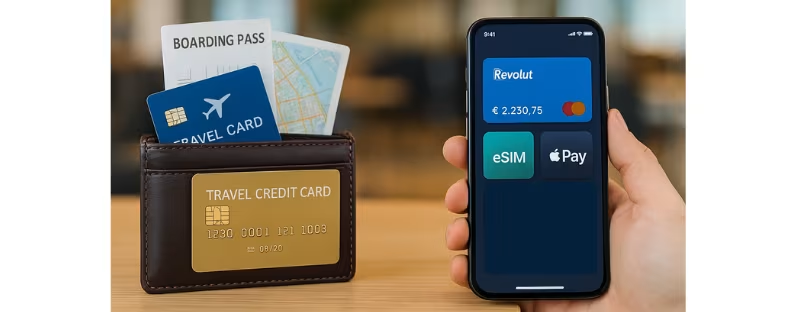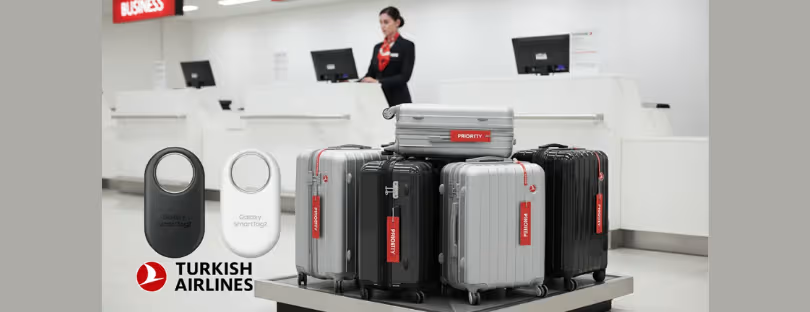
Are Travel Credit Cards Dying? PayTech, eSIM Wallets & Alt Perks Are Coming for Them
Let’s be honest — how often do you really use those airline points before they expire? Or book that hotel with your branded travel card just to stay “loyal,” even when better options exist elsewhere? Travel credit cards used to be the golden ticket for frequent flyers and travel hackers. Flashy signup bonuses, priority lounges, upgrades — all you had to do was swipe and rack up the points. Travel credit card alternatives
But the game has changed. Fast.
We’re now living in a world where Revolut, Wise, Apple Pay, and even eSIM wallets are replacing traditional perks with real-time flexibility, smarter spending, and digital-first convenience. And travel credit cards? They’re starting to feel a little… dusty.
The Glory Days of Travel Credit Cards
It wasn’t that long ago that carrying a premium travel credit card meant something. You were “in.” You skipped the queue at the airport lounge, boarded first, got late checkout. The Amex Platinum, Chase Sapphire Reserve, or your local bank’s co-branded airline card made you feel like a savvy traveler.
But let’s not kid ourselves — a lot of those perks came with strings attached. Blackout dates. Points that lost value. High annual fees justified by perks you used once or twice. And if you weren’t flying regularly or booking through certain portals, you were losing money.
Now, people want speed, transparency, and flexibility. The kind of experience travel cards should offer — but often don’t anymore.
Enter: PayTech Travel credit card alternatives
The rise of fintech — and specifically PayTech — is shifting travel habits fast. Revolut and Wise have built loyal fanbases by offering multi-currency accounts, real exchange rates (yes, actual ones), and intuitive mobile apps that let you freeze your card, track spending, and send money instantly.
With Revolut, you can hold dozens of currencies, get travel insurance, buy lounge access, and even trade stocks or crypto — all in one place. Wise makes international payments feel local, and both beat most credit cards when it comes to foreign transaction fees.
The kicker? No points, no hoops. Just real value, instantly.
So ask yourself: would you rather earn 1.5x miles on a restaurant meal you’ll redeem in two years, or save 3% upfront and see it reflected in your account the next second?
The Problem With Points
Points and miles used to be fun. They felt like gaming the system. Now, they feel like a relic of a slower time. One where people printed boarding passes and called to confirm hotel bookings.
The reality? Most travelers don’t optimize point redemption, and airlines or hotel programs keep shifting the goalposts — devaluing points, adding restrictions, or limiting availability. The game is rigged, and people know it.
Plus, the loyalty itself? It’s fading. Today’s digital nomads, remote workers, and Gen Z travelers aren’t sticking to a single airline alliance or hotel brand. They want flexibility, price transparency, and frictionless service — not 10,000 points if they jump through seven hoops.
 Apple Pay and the Alt-Perk Era
Apple Pay and the Alt-Perk Era
Meanwhile, Apple Pay and Google Pay have changed how we think about payments entirely. Tap and go. No wallet. No international fees (if paired with the right bank). Security built-in.
And then there’s alternative perks — not “loyalty” as we used to know it, but useful benefits that enhance your day-to-day.
Take eSIM wallets, for example. Imagine arriving in Japan, tapping a button, and instantly activating data — no kiosk, no SIM-swapping, no paperwork. Brands like Airalo, Airhub, and Nomad make that real. Now, some digital wallets even integrate travel connectivity perks or bundles directly — blurring the line between fintech and travel utility.
In this world, your actual wallet — physical or digital — is smarter than your premium travel card.
What Travel Credit Cards Still Get Right
All this isn’t to say that travel credit cards are completely obsolete. For frequent business travelers or families that put a large amount of spend on one card, the math can still work. Travel insurance, purchase protection, rental car coverage — these are real perks.
And some premium cards still offer hard-to-replace benefits: Priority Pass access (even if lounges are overcrowded these days), concierge services, or elite fast-track status.
But here’s the question: are these benefits worth the €600+ annual fee for someone who travels 3–4 times a year?
More and more, the answer seems to be no.
Where We’re Headed: Experience-First Travel
The rise of “experience-first” travel means that convenience, personal control, and instant results are now more important than long-term loyalty. That means:
- eSIMs replacing roaming plans and airport SIM kiosks.
- Digital banks replacing travel money cards and FX desks.
- On-demand insurance replacing travel bundles baked into card fees.
- Perks like free airport transfers, carbon offsetting, or smart alerts replacing “points” in importance.
Even in hospitality, we’re seeing this shift. Hotels are partnering with fintech to let you pay with crypto, split bills instantly, or unlock rooms with your phone. Why wait in line at reception when you can go straight to your room with a QR code?
That’s the mindset travelers now bring to every stage of their trip — and the legacy card companies are scrambling to keep up.
So… Are Travel Cards Dead?
Not yet. But they’re bleeding relevance, fast.
The future belongs to flexible, low-fee, digital-native services that deliver instant, visible value. Not a vague promise of 3x miles when dining abroad (only if booked through a specific partner site, and only redeemable on a Tuesday in February).
For many travelers, especially Gen Z and millennials, travel credit cards are no longer essential — they’re optional. And increasingly, they’re getting left behind.
So if you’re still clinging to your metal card hoping to earn enough points for a “free” flight, ask yourself this: is the value still there? Or is it time to ditch the loyalty and travel smarter?
In 2025, real-time wins. Travel credit card alternatives
Sandra Dragosavac
Driven by wanderlust and a passion for tech, Sandra is the creative force behind Alertify. Love for exploration and discovery is what sparked the idea for Alertify, a product that likely combines Sandra’s technological expertise with the desire to simplify or enhance travel experiences in some way.










